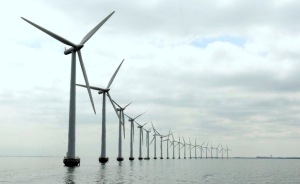
Breakthrough wind energy projects are not as common as breakthrough solar energy projects. This is perhaps because our method of harnessing wind energy is relatively efficient, at least compared to what current commercial solar PV energy has to offer.
But then again though, its efficiency is not really that high (about 40% max). We still need to tweak current wind turbines to help them combat the inherent problems posed by any intermittent energy source, and this new breakthrough might just help us break their current limits.
SUPRAPOWER is the name for a European-based project that aims to develop a highly efficient, powerful, and lightweight wind turbine that uses the principle of superconductivity. Headed by Spanish technology research organization Tecnalia, the project combines the knowledge and capability of nine European partners in an effort to forge a breakthrough in current wind energy technology. The project would last for at least four years, hopefully obtaining the objective of introducing a compact wind turbine with the power and efficiency of several units combined.
Inspiration for the project spurred from the perceived need for wind turbines to be more scalable, and able to perform adequately even when weight is significantly reduced. As stated by the report, it is the relatively large size and weight of current turbines that drives operational and maintenance costs. If a method for developing more lightweight turbines is developed, then it is possible to further drive down the cost of wind energy, making it more available to everyone.
The idea for introducing superconductivity to wind turbine design is quite revolutionary. As it is currently known, superconductivity provides wonders in electrical energy under the near absolute zero threshold (at around -253° C). At its temperature range, electrical resistance simply grinds to a halt, and electric current transfer efficiency tops near 100%.
This means that a superconductor generator that is integrated into a wind turbine could theoretically transfer all of the energy the turbine generates without a single watt lost due to heat. Researchers of the project claims that a superconducting generator could be kept at its optimal operational efficiency by using a rotating cryostat that would cool the superconducting coils at the temperature required. A statement by Tecnalia in the report claims that a single, compact wind power plant with a superconducting generator could potentially produce 10 megawatts of energy.
If a working wind turbine using their concept is successfully developed, it is expected that manufacturing costs for new wind turbines adapting the technology could be reduced by up to 30%.
Researchers involved in the project plan on first proving the working efficiency of all individual concepts that make up the project. They would then move forward to actually create a scaled down test version of the superconducting generator. Though there are no clear announcements for the completion for the project itself, the completion of the initial test phase (design, development, construction, and testing of the prototype generator) is expected to be completed by 2014.